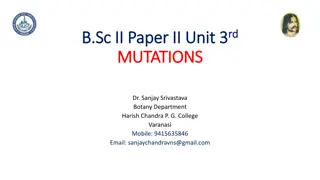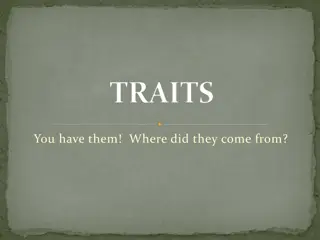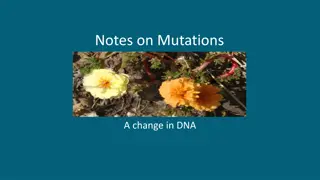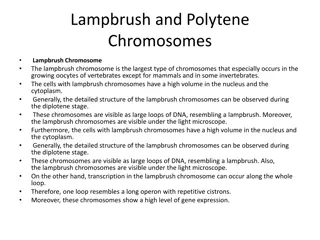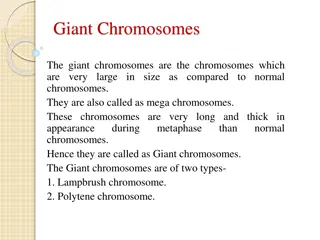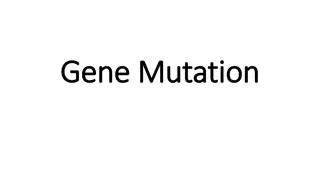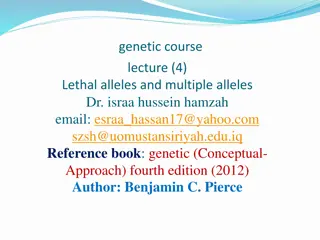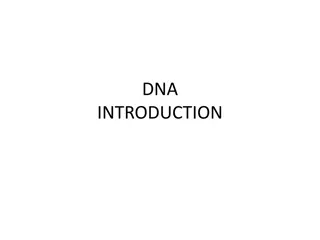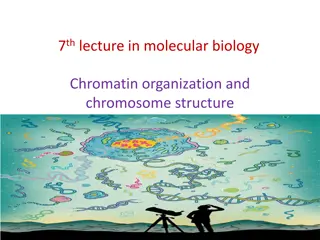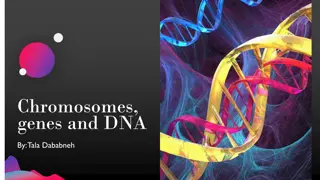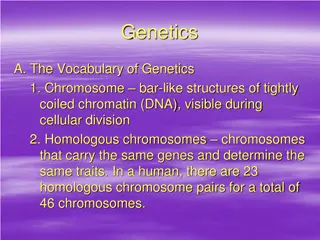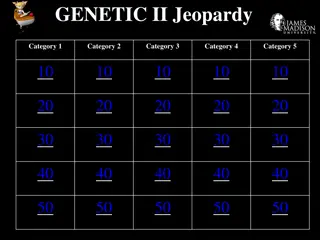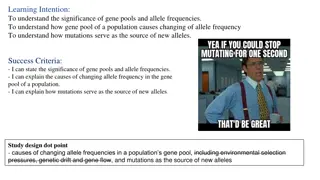Understanding Genes, Chromosomes, Alleles, and Mutations in DNA
Explore the intricate world of genetics through genes, chromosomes, alleles, and mutations. Delve into the fundamental structures of DNA, such as nucleosomes and eukaryotic chromosomes. Gain insights into key genetic terms like genes, alleles, and genome composition. Learn about mutations, including gene mutations like in sickle cell anemia, and understand the genetic basis of diseases. Unravel the complex mechanisms by which DNA dictates inheritable characteristics and influences genetic diversity.
Download Presentation

Please find below an Image/Link to download the presentation.
The content on the website is provided AS IS for your information and personal use only. It may not be sold, licensed, or shared on other websites without obtaining consent from the author. Download presentation by click this link. If you encounter any issues during the download, it is possible that the publisher has removed the file from their server.
E N D
Presentation Transcript
Genes, Chromosomes, Alleles and Mutations
Review of DNA 7.1.1 C G A T G C
Nucleosomes 7.1.2 / 7.1.3 In eukaryotes, DNA associates with proteins called histones DNA is wound around an octamer of histones and is secured to a H1 histone, forming a nucleosome Nucleosomes serve two main functions: They protect DNA from damage They allow long lengths of DNA to be packaged (supercoiled) for mitosis / meiosis
Eukaryotic Chromosomes 4.1.1 Eukaryotic chromosomes consist of DNA wrapped around histone proteins This forms the basic structure of the nucleosome, which is packed together to form chromatin (in a 'beads on a string' arrangement) Chromatin will supercoil and condense during prophase to form chromosomes
Key terms 4.1.2 Gene: A heritable factor that controls a specific characteristic, consisting of a length of DNA occupying a particular position on a chromosome (locus) Allele: One specific form of a gene, differing from other alleles by one or a few bases only and occupying the same locus as other alleles of the gene Genome: The whole of the genetic information of an organism
Composition of the Genome 7.1.4 DNA is either made up of unique sequences (genes) or non-coding sequences (which includes repetitive sequences)
Mutations! 4.1.3 Gene mutation: A change in the nucleotide sequence of a section of DNA coding for a particular feature An example of a gene mutation that causes disease by altering the amino acid sequence of a polypeptide is sickle cell anaemia
Cause of Sickle Cell Anaemia 4.1.4 A base substitution mutation is the change of a single base in a sequence of DNA, resulting in a change to a single mRNA codon during transcription In sickle cell anaemia, the 6th codon for the beta chain of haemoglobin is changed from GAG to GTG (on the non-coding strand) This causes a change in the mRNA codon (GAG to GUG), resulting in a single amino acid change of glutamic acid to valine (Glu to Val) The amino acid change alters the structure of haemoglobin, causing it to form fibrous, insoluble strands
Consequences of Sickle Cell Anaemia The insoluble haemoglobin cannot effectively carry oxygen, causing individual to feel constantly tired The sickle cells may accumulate in the capillaries and form clots, blocking blood supply to vital organs and causing a myriad of health problems Also causes anaemia (low RBC count), as the sickle cells are destroyed more rapidly than normal red blood cells Sickle cell anaemia is an autosomal recessive condition and is thus caused by having two recessive alleles Heterozygous individuals have increased resistance to malaria due to the presence of a single recessive allele (heterozygous advantage)






